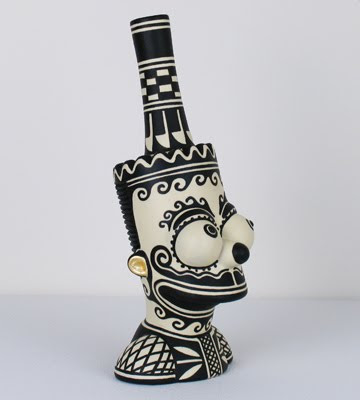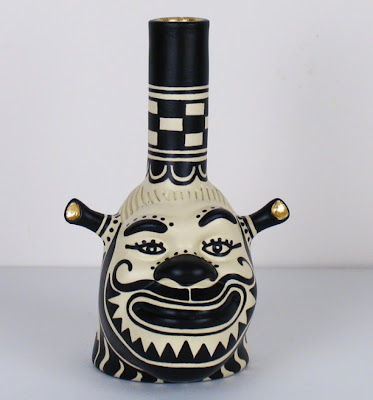



Now, can I do that with clay?
(images via Jonathan Levine Gallery and artist's Flickr)



























All my work is hand built. The clay I use is an English stoneware – since there is no natural stoneware clay in Denmark. I add a lot of grog (highfired, crushed clay) to make it stronger and to give it more roughness, and also to create a more three-dimensional surface, full of holes and peaks. About 75 per cent of the body consists of sand and grog. Some of the grog comes from smashed bisqued or fired pots. I add earthen ware clay to give a deeper colour and this, in turn, also increases the amount of iron in the body and gives the glazes more to interact with.
My forms are simple and pure, which provides an open space for the glazes to invade. My aim is to let the ceramic materials and the heat work together to create textures and surfaces that are unique to the ceramic materials. I have discovered that superimposing glazes (layer on layer) is the most powerful way. It is striking that even very dull glazes can become essential in combination with others. More often than not I refire my work, as the pieces very rarely come out with the desired result after the first fire. Reglazing adds yet another layer. Five or more makes it just right, or can cause the complete destruction of the piece, making it collapse, the glaze literally eating its way through the clay. I have a considerable wastage, about one in two proves successful, sometimes less, sometimes a little more.
Five years ago I started giving my works numbers in order to keep track of them in the glazing process. This not only helped me remember what I had already put on, but also it became a sophisticated glaze test. Sometimes I try to remake successful numbers, but it always fails. This used to frustrate me, but I have grown to appreciate it. The result is determined by several factors, and I am not the one in control inside the kiln. My work is outside, fortunately.




















